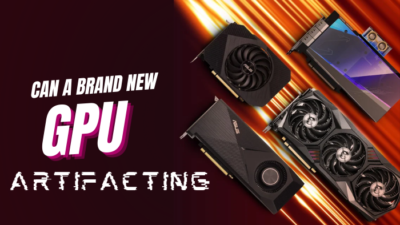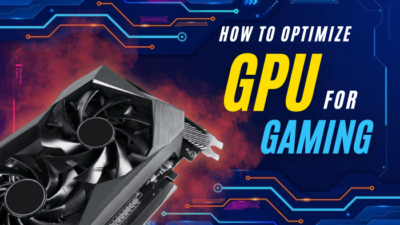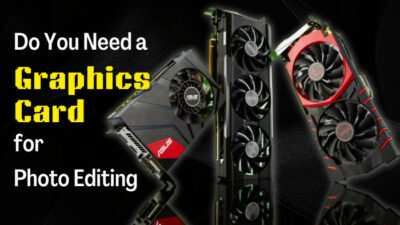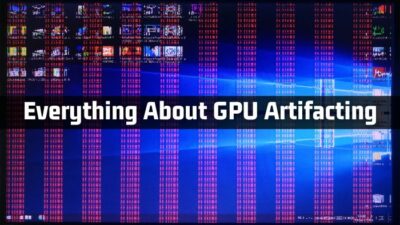If you owned a GPU in the past decade, you would be familiar with the term AMD Crossfire. That was a proprietary technology if you wanted to add two or more GPUs to your setup. This is not something that we see nowadays, though.
So, how does crossfire holds up now? Or have people forgotten it as a long-lost relic?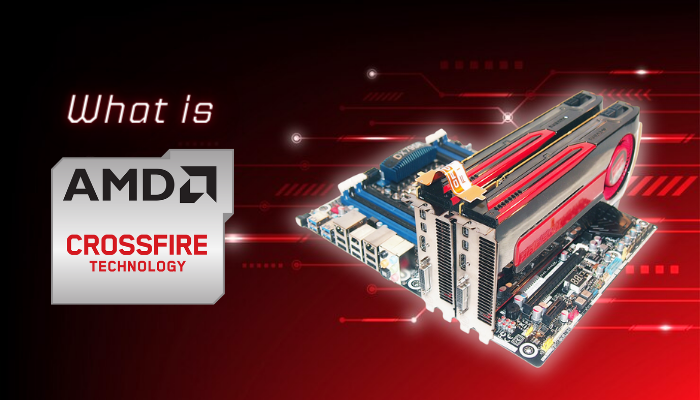
If you want a quick refresher on this tech, look no further and continue reading this piece that I have compiled for you.
What is AMD Crossfire?
Back in the day, it was popular for gamers to drive two GPUs on their setup. This meant you could double your performance in supported games. AMD Crossfire was the multi-GPU technology that enabled this to happen. You could pair two GPUs from the same series (not necessarily identical), and the driver would recognize them.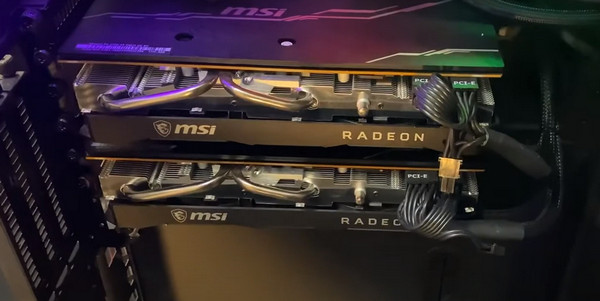
But why would you do that?
Because if you pair two mid-range GPUs, their combined performance could bring the overall score closer to a more expensive higher-tier product. Even considering the price of two individual cards, they would still cost less than a single flagship GPU.
NVIDIA also had a similar tech called SLI (Scalable Link Interface). The only difference between that and AMD’s solution was which GPUs you could pair together. For NVIDIA, you needed the same GPU for SLI. AMD allowed different GPUs to crossfire, provided they are from the same generation.
Both SLI and Crossfire used to require a bridge that connected the GPUs physically. But starting from the AMDs 200 series of GPU, you do not need a Crossfire Bridge Interconnect to connect the two GPUs together.
But how does one make two GPUs render the same frame? The sorcery lies in the algorithm that is used. The next section explains that.
You should read the post about which Intel and AMD CPUs support PCIe 4.0?
How does AMD Crossfire Work?
Since we have two GPUs to render several frames, we need to distribute the load between them. This is done by one of the two graphics cards. One GPU is assigned as the master and the other as a slave. The master is responsible for managing the workload between them.
There are two ways to distribute this task.
First is AFR or Alternate Frame Rendering. One frame from the buffer is rendered by one GPU, while the other handles the next frame.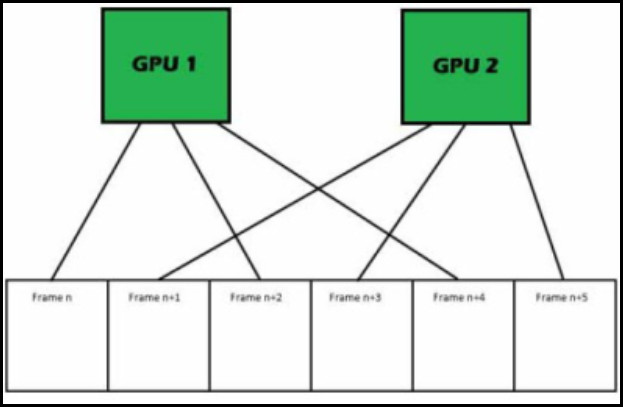
The main GPU ensures that there is synchronization, so that screen tearing is not present. But since the frames are rendered on different GPUs, you can experience micro-stuttering using this technique.
Another way to do this is SFR or Split Frame Rendering. Instead of assigning different frames, the GPUs are allocated a portion of a single frame. When the complete image is made, the frames are sent to the master GPU. It then constructs the frames, and that displays on your screen.
Since you have two different GPUs to render the images, more frames are generated simultaneously. The result is increased FPS in games.
Which AMD Cards Support Crossfire?
Since 2017, AMD has dropped the term crossfire from its marketing materials. This technology is not mentioned anywhere on the three generations of RDNA graphics cards, which is the latest offering from AMD. The last GPU to support crossfire was the Polaris-based RX 500 series.
So any GPU released before that should support Crossfire. That includes the Radeon R5, R7, 200, and 300 series. The same goes for Radeon 8000, 7000, and previously released graphics cards.
Here are two RX 580s about to be put in crossfire.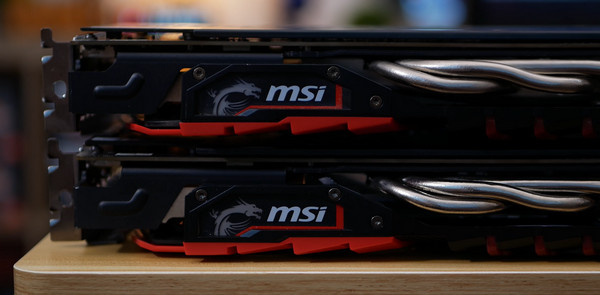 The advantage that Crossfire gives you is that any GPU from one generation can be linked to another. It does not have to be the exact model.
The advantage that Crossfire gives you is that any GPU from one generation can be linked to another. It does not have to be the exact model.
For example, you could pair an RX 560 with an RX 590 and run them as a dual GPU configuration. It will work, but using the same GPU is recommended for getting twice the performance, which Crossfire is really about.
Also read, can I replace my AMD processor with an Intel?
How to Configure AMD Crossfire
First, ensure that you are running the latest driver for your graphics card. Go to the AMD website and download the current driver and install it. Alternatively, you can update the latest drivers from the Radeon software’s interface.
Follow the steps below to configure AMD Crossfire for AMD Adrenaline 2019 and earlier:
- Right-click on Desktop and open AMD Radeon Settings.
- Now go to Gaming.
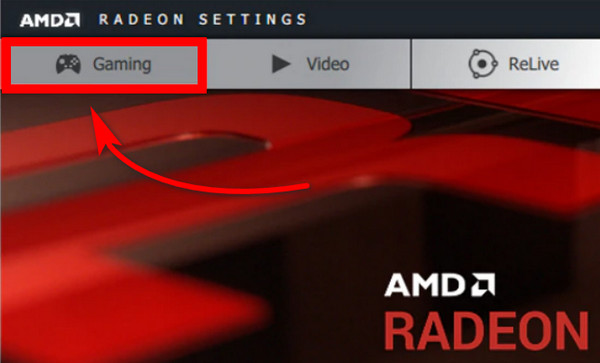
- Open Global Settings.
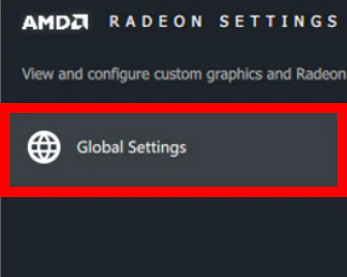
- Turn on the toggle next to AMD Crossfire and Frame Pacing.
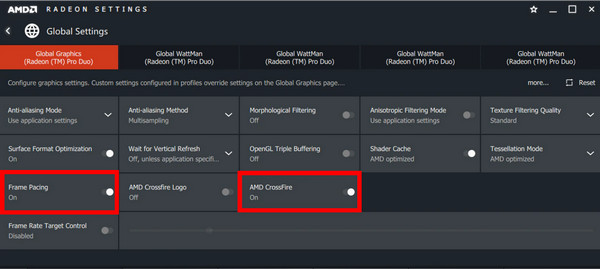
- Now go back to the Gaming tab and click on any game you want to configure.
- Under AMD Crossfire, select the crossfire fire from here. If you are unsure, select AMD pre-defined profile.
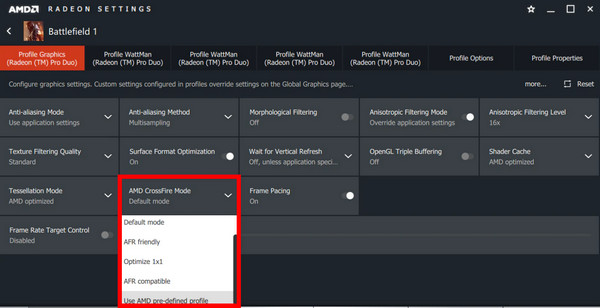
If you are using a newer version of AMD software, the next steps will come in handy.
These are the steps to configure AMD Crossfire for AMD Adrenaline 2020 and earlier:
- Right-click on Desktop and open AMD Radeon Software.
- Now click on the gear icon and go to Graphics.
- Under Advanced, turn on the toggle next to AMD Crossfire.
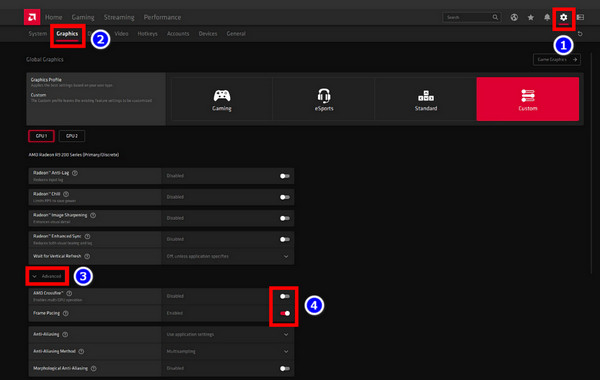
- Click Ok to acknowledge if any dialog box pops up.
Now you should have successfully set up crossfire on your system.
To test if a game is properly utilizing both GPUs, use MSI Afterburner to check the GPU usage. Run games that are known to implement the crossfire API. I have listed some games in the next section, which you can run to try on your system.
State of Crossfire in 2023
Newer AMD GPUs technically have no support for crossfire, but you can make it work by using a feature set supported by these video cards. It is called Direct X 12 Multi GPU.
Using this, you can theoretically use two GPUs. In fact, AMD provides an option in the Radeon Settings where you can enable this.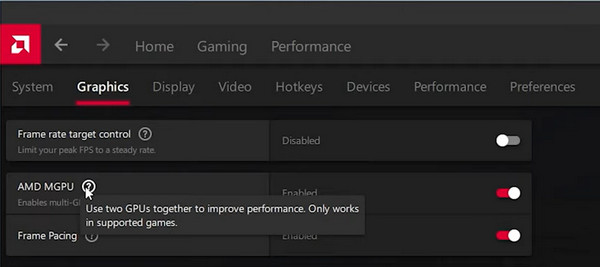 The list of games that fully utilize multi GPUs is very limited. Ashes of the Singularity, Rise of the Tomb Raider, Deus Ex Mankind Divided, etc. were a few notable games released in the last few years that made good use of crossfire.
The list of games that fully utilize multi GPUs is very limited. Ashes of the Singularity, Rise of the Tomb Raider, Deus Ex Mankind Divided, etc. were a few notable games released in the last few years that made good use of crossfire.
Games released in the last two years hardly support multiple GPUs. If you are rocking a crossfire in your system, one of the two GPUs will remain idle all the time. And you will get the same frame rate as you would with a single card installed.
This change, however, did not arrive suddenly.
With time, single GPUs have become extremely powerful. Improvements in the architecture and competition between NVIDIA and AMD meant we now have very powerful GPUs. Just take RTX 4090 as an example.
Now you can run games at 4K without losing image quality using one GPU. And you do not even need the upper echelon from AMD or NVIDIA. An RTX 3070 or RX 6700XT can give you more than playable frame rates.
Also, add in the cost of silicon in GPU manufacturing. Consumers are more willing to buy single cards now. This has a domino effect on the support for Crossfire in the games.
You may also like to read about is AMD Athlon good for gaming?
Frequently Asked Questions
What does AMD Crossfire do?
AMD Crossfire enables two GPUs to be used when running a game. That way, you can get twice the frame rates if you match the exact GPU and run games that support this technology.
Is AMD Crossfire still a thing?
AMD Crossfire is no longer actively supported by AMD. Instead, the Direct-X 12 MGPU replaces this and is utilized in titles that support them.
What are the requirements for AMD Crossfire?
To use AMD Crossfire, you must use two AMD GPUs that are from the same generation. For the best performance, it is recommended to use the same graphics cards. You can use any AMD Radeon RX 500, 400, Radeon R7, R9 200, and 300 cards to use crossfire.
Concluding Words
So that’s AMD Crossfire for you. NVIDIA announced NVLINK as a successor to their SLI technology for professional workloads such as rendering. So far, we have not seen any announcement from AMD about their updated version yet.
That means Crossfire and dual GPUs are long gone from the consumer space. And if the current GPUs are an indication, they are unlikely to return in the future.
And that concludes this article. I hope you had a great time reading it.

